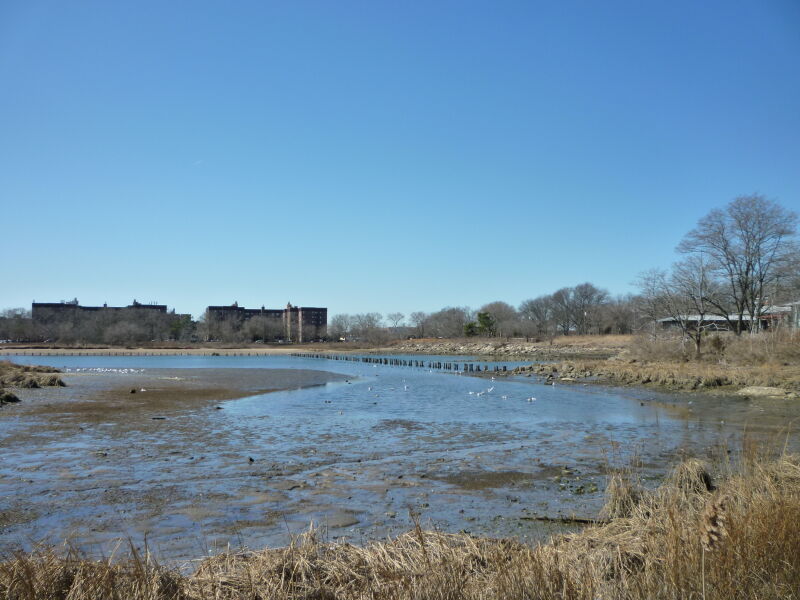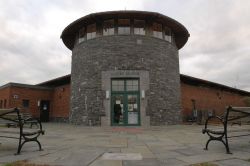Marine Park
Dr. John’s Playground
This playground honors Dr. John Elefterakis (1959-1997), a graduate of adjacent Public School 277, and a man dedicated to the Gerritsen Beach community. Dr. John, as he was known to his patients, was born on August 19, 1959. He attended Marine Park Junior High School and graduated in 1976 from Sheepshead Bay High School, where he was a member of the baseball and basketball teams. Already aware of his medical calling, he enrolled in the six-year Sophie Davis Biomedical Program at the City College of New York.
Dr. John completed his medical education at the New York Medical School in Valhalla, New York. He graduated in 1982 and was accepted at the Lutheran Medical Center in Sunset Park for his internship, and subsequent residency, in internal medicine. Dr. John continued his affiliation with the Lutheran Medical Center as an associate attending physician even after the completion of his residency. He opened his own private practice in 1988, the Gerritsen Beach Medical Plaza on Gerritsen Avenue. Dr. John is remembered as a friendly and accessible physician willing even to make house calls.
The Gerritsen Beach community benefited tremendously from Dr. John’s energy and spirit. For twelve years he served as the Medical Director of the Gerritsen Beach Volunteer Fire Department. This organization has been protecting the homes of Gerritsen Beach since 1921, when the area was first developed. Dr. John also provided volunteer health care for the Nazareth High School, Sheepshead Bay High School, and Abraham Lincoln High School football teams, and worked with the Youth Drug Abuse Resistance Education program (D.A.R.E.). He died suddenly of a brain aneurysm on March 6, 1997; this playground was named for him on November 2 of that year.
The Gerritsen Beach neighborhood is part of the greater neighborhood of Marine Park, and takes its name from Dutch colonist Wolfert Gerritsen. Gerritsen built a gristmill on Gerritsen Creek in the latter half of the 17th century. The mill was in operation until 1889. It was destroyed by fire in 1935. Gerritsen Creek, a freshwater stream, originally extended about twice as far inland as it does today. In 1920, its course north of Avenue U was converted into an underground storm drain. The creek was probably a favorite hunting and fishing spot for Native Americans living in the nearby Keshawchqueren village; archaeological excavations in Marine Park have revealed food preparation pits dating from 800 to 1400 C.E. which contain deer and turtle bones, oyster shells, and sturgeon scales.
Gerritsen Creek continues to supply Marine Park’s salt marsh with fresh water, which helps the marsh support a wide range of native species. The landscape of Marine Park is dominated by broad expanses of fertile salt marsh, meadows adorned with wildflowers, sandy dunes held in place by beach plants, and jungle-like thickets of shrubs and vines. Myrtle warblers, grasshopper sparrows, cotton-tailed rabbits, ring-necked pheasants, horseshoe crabs, and oyster toad fish are a small sampling of the animals that inhabit these plant communities and live in or around Gerritsen Creek.
Dr. John’s Playground, bounded on the north by Avenue X and on the west by Gerritsen Avenue, was acquired by the City of New York on April 10, 1925, and transferred to Parks the same day. The land opened as a playground on October 2, 1936. In 1952, a parcel of the land was transferred to the Board of Education (BOE) for the construction of present-day P.S. 277, also known as the Gerritsen Beach School. The playground reopened in 1955, jointly operated by Parks and BOE.
In 1999, Dr. John’s Playground received a $500,000 renovation funded by City Council Member Herbert E. Berman. This renovation included the reconstruction of the surrounding lawn, new play equipment, a north arrow paver, and the planting of 11 Littleleaf Linden trees (Telia cordata). The work also included the installation of a large spray shower in the shape of a pond with precast concrete spray pieces in the forms of two larger-than-life bluefish. There is a painted ripple effect in the pool, and horseshoe crabs, starfish, mollusk, and scallop shells are also included in the design. Also contained in the playground are benches, older London planetrees (Platanus x acerifolia), tot and regular swings, and a colored stone compass positioned at the entrance that welcomes all to this marine playground.
Check out your park's Vital Signs
Clean & Safe
Green & Resilient
Empowered & Engaged Users
Share your feedback or learn more about how this park is part of a
Vital Park System










